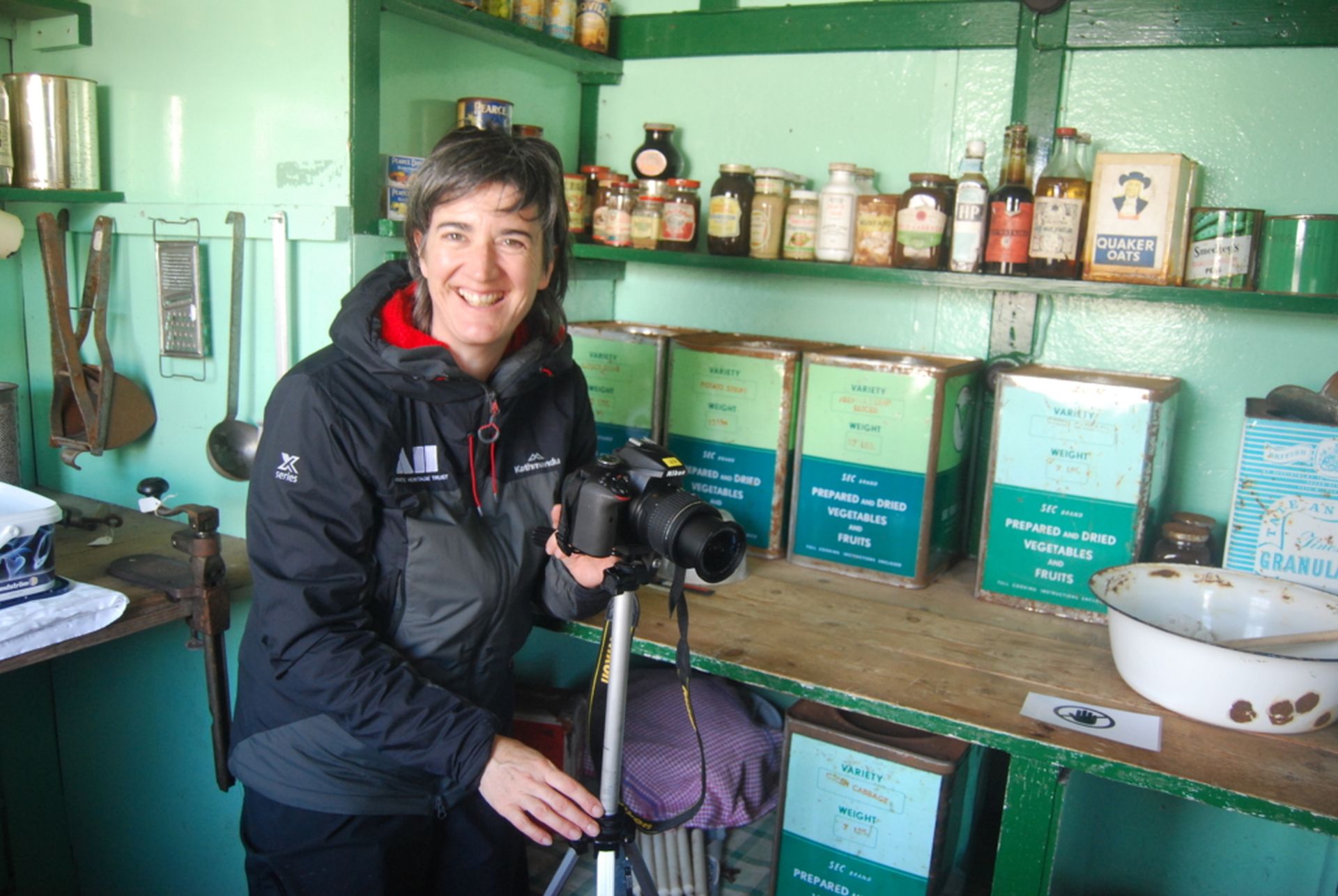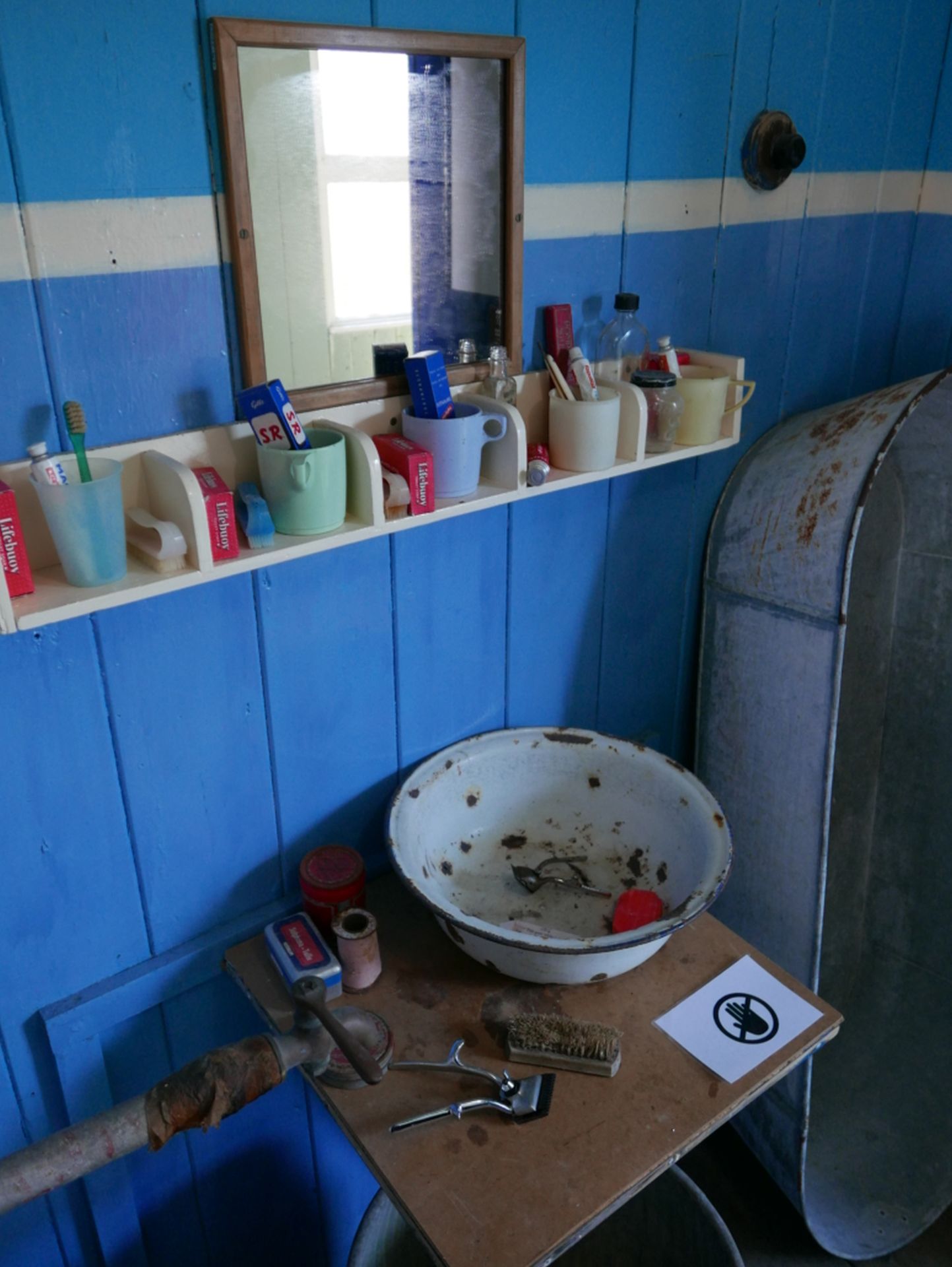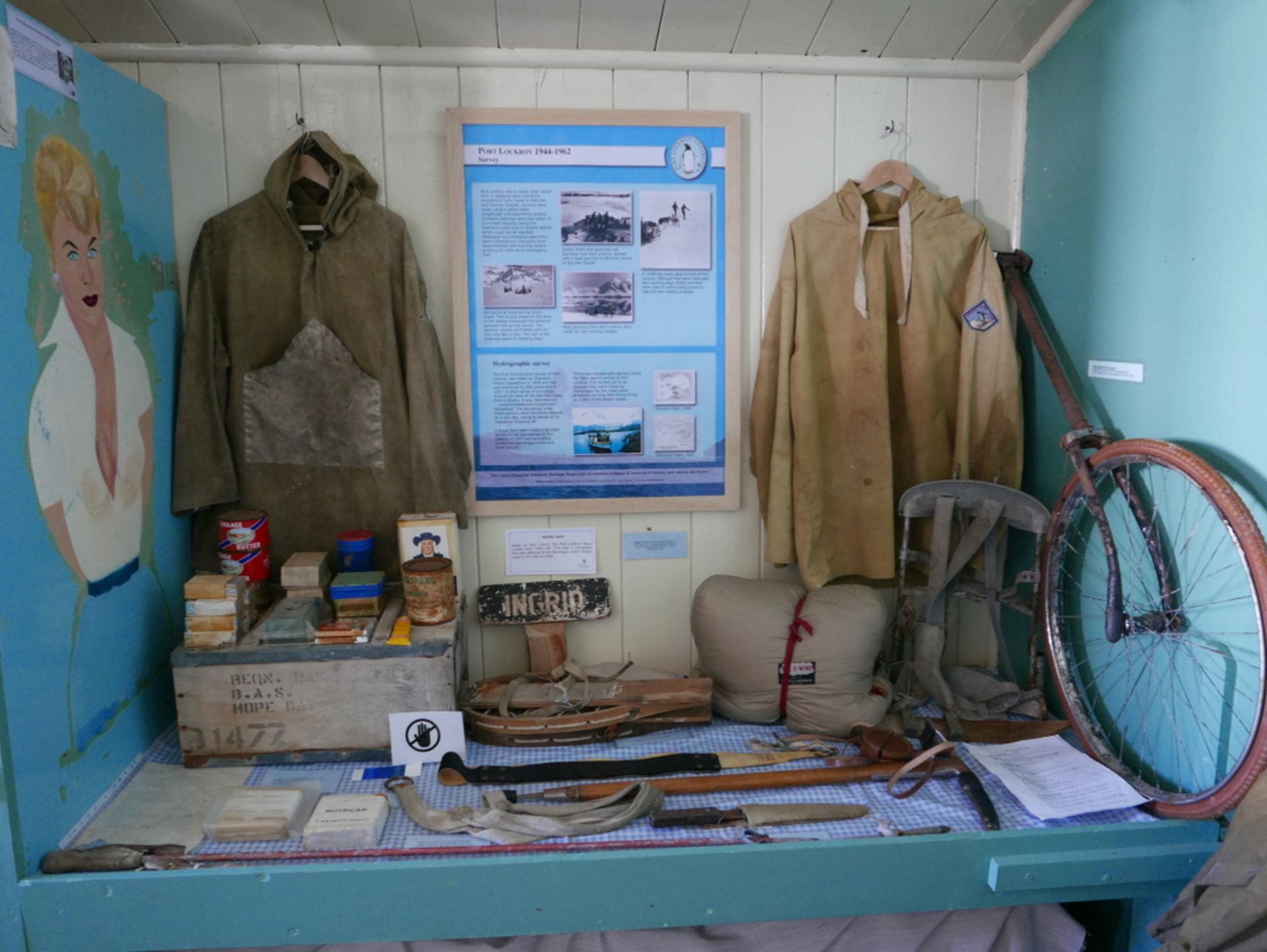Peninsula Partnership Update
As part of our multiyear support agreement with UKAHT, Artefact Conservation Programme Manager Lizzie Meek travelled to the Antarctic Peninsula to survey and assess artefacts at Port Lockroy.
 Lizzie Meek/Antarctic Heritage Trust
Lizzie Meek/Antarctic Heritage Trust Base A at Port Lockroy
Base A, Port Lockroy, is an unusual Antarctic destination, standing out amongst other Peninsula landings for its unique combination of history, postal and shopping opportunities, wildlife and majestic location all at one site.
Over a seven week period in late 2019, the Trust’s Programme Manager Lizzie Meek, journeyed via South America to the Antarctic Peninsula, to work alongside British conservator Sophie Rowe, surveying the artefact collection inside Bransfield House and the Boatshed, the two remaining 1948 Base A buildings at Port Lockroy.
 Sophie Rowe/UKAHT
Sophie Rowe/UKAHT Lizzie Meek
The work was part of a wider project to conserve and maintain the six historic bases on the Antarctic Peninsula, which UKAHT cares for. That project aims to survey, laser scan and photogrammetrically capture all the base buildings, create accurate architectural drawings, describe and understand the building conditions, and catalogue and condition survey all of the remaining artefacts across the six sites.
Port Lockroy is a busy spot, and is run as a heritage site and visitor experience by a dedicated team of four personnel (separate to the conservation team) who manage the visitation of thousands of cruise ship passengers over the five months of the summer season. Visiting the ‘penguin post office’ is a must do for visitors so they can send a postcard home.
 Lizzie Meek/Antarctic Heritage Trust
Lizzie Meek/Antarctic Heritage Trust Artefacts
After a relatively smooth crossing of the legendarily rough Drake Passage, Lizzie and her teammates had a longer than expected journey to Port Lockroy with several attempts to be transferred to shore.
Despite the five day delay at the start of the season, the cataloguing and condition survey project was successfully completed. For any historic collection, knowing what you have, where it is, and what condition it is in are the fundamental components of collection care, and this information is typically held in the collection database.
Lizzie says that one of the most challenging parts of completing the assessment and survey of an artefact collection like this is “trying to fit a huge job into a finite period of time – you can potentially spend a lot of time assessing, describing and photographing each object, but you have to work out how much time you can allocate to each of your processes, and continually adjust it depending on unexpected finds, technical hitches, or interruptions by weather or visitors.”
Her extensive experience working with the Trust team on the Ross Sea Heritage Restoration Project has enabled her to share with UKAHT the many good routines and processes the Trust has developed for working in the cold and looking after the site, objects, and team members through the long and arduous process.
Taken all together, the data from some 12,000 items was collected this season at Port Lockroy. These included personal clothing and hygiene items, recreational items such as books, magazines, records, science equipment, sledges and tools, spare parts and radio gear.
 Antarctic Heritage Trust
Antarctic Heritage Trust Artefacts
This assessment and survey work will contribute to the picture UKAHT has of the overall condition of these Antarctic Peninsula collections. Knowing the numbers, condition and material types of objects will enable them to plan for conservation projects in the future.
Lizzie says, “As we have the experience of bringing objects all the way through a project from assessment to treatment, we are able to help UKAHT improve the information gathering at the assessment phase – looking for specific types of data which will enable UKAHT to estimate time, equipment and other resources needed for future conservation.”
Although an experienced and confident Antarctic resident, used to cold living and being surrounded by penguins, Lizzie found working in the midst of so many visitors was a new experience. Some were surprised to have a conservator in the middle of their camera shot! However, most visitors were clearly having an incredible experience, wowed by the landscape and the unexpected colour and detail of the historic base.
 Lizzie Meek/Antarctic Heritage Trust
Lizzie Meek/Antarctic Heritage Trust Artefacts


 Lizzie Meek/Antarctic Heritage Trust
Lizzie Meek/Antarctic Heritage Trust